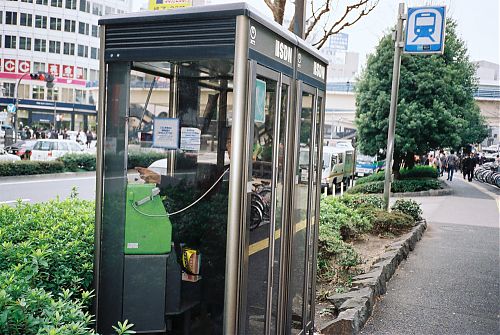For a while, Kyocera manufactured a bunch of Yashica TX series models, putting world-famous Zeiss lenses in plain black boxes. I became familiar with these models when I saw a Kyocera TD (original Yashica T equivalent) in a shop in Okayama for 7000 yen, about $70. I passed it up, figuring that I could find it in Tokyo later. I ended up finding a TD on Yahoo Auctions for Y1500. I was feeling pretty pleased with myself on the way to meet the seller, who happened to be located in Tokyo. I felt even better when he took 50% off the price because of a minor defect with the battery cover. A 3.5/35mm Tessar lens for about $8? I’m with that.

Kyocera TD
The guy who sold me the camera makes a business out of fixing up old cameras and selling them on Yahoo Auctions. His entire shop—a small apartment which I can only hope does not also double as his living space—is absolutely covered in cameras, half-gutted bodies, straps, cases, and batteries from floor to ceiling. My dad once spent a summer working for free at an audio repair shop on Long Island, I have half a mind to email this guy and see if I couldn’t do the same thing, to learn about fixing up cameras.

packing tape steez
On the whole, I like the camera, especially for the price. The results are very good: images are sharp from corner to corner, which I guess should be expected from a Zeiss lens. It’s not perfect though: autofocus sometimes gets confused by close objects, and there’s no AF override, so you’re stuck with whatever the TD thinks is best. Also, a few shots from my test rolls came out overexposed. Maybe, like the Konica Hexar AF, it has a fairly slow max shutter speed, and I’ve run up against it by using 400 speed film. (The Hexar can’t go any faster than 1/250.)

Unlike the quiet Hexar, though, this is a very “rude” camera! Automatic film winding is noisy, and the camera will also use flash whenever it thinks that it’s necessary—you can override flash mode, but to do so you have to push a button on the top of the camera, as you’re also pushing the shutter. This makes it difficult, if not impossible, to shoot quickly if you want to be sure of not using flash. Still, I’m really happy with this camera. I wanted to get something new for a trip to Cambodia and Vietnam that I’m about to take, and I’m glad to have an un-precious camera.
Update 4/6/08: After seeing more results from this camera, I’ve noticed that the highlights really do get blown out a lot. It seems to do better in softer light. Also, here’s some more examples from the camera.







